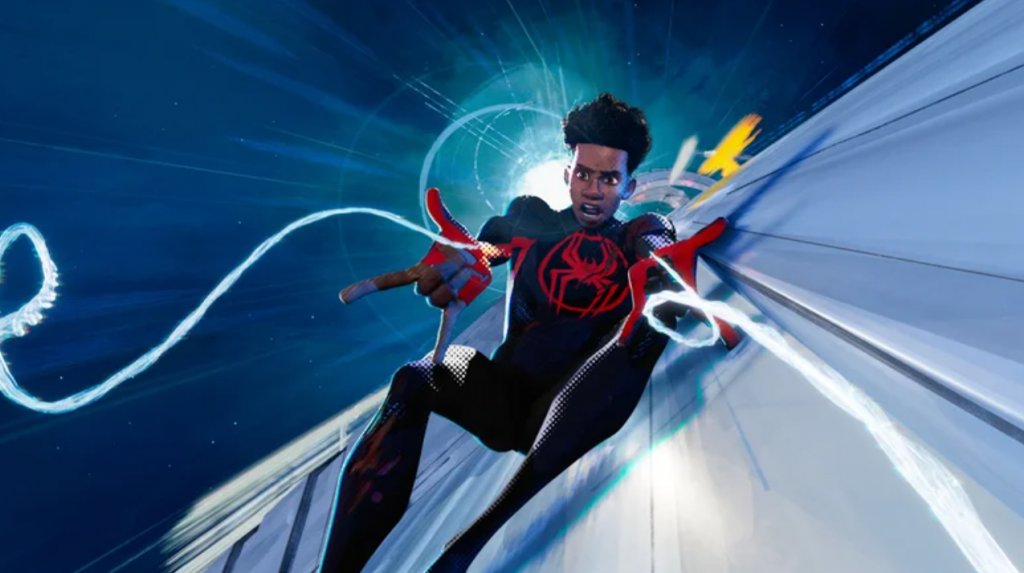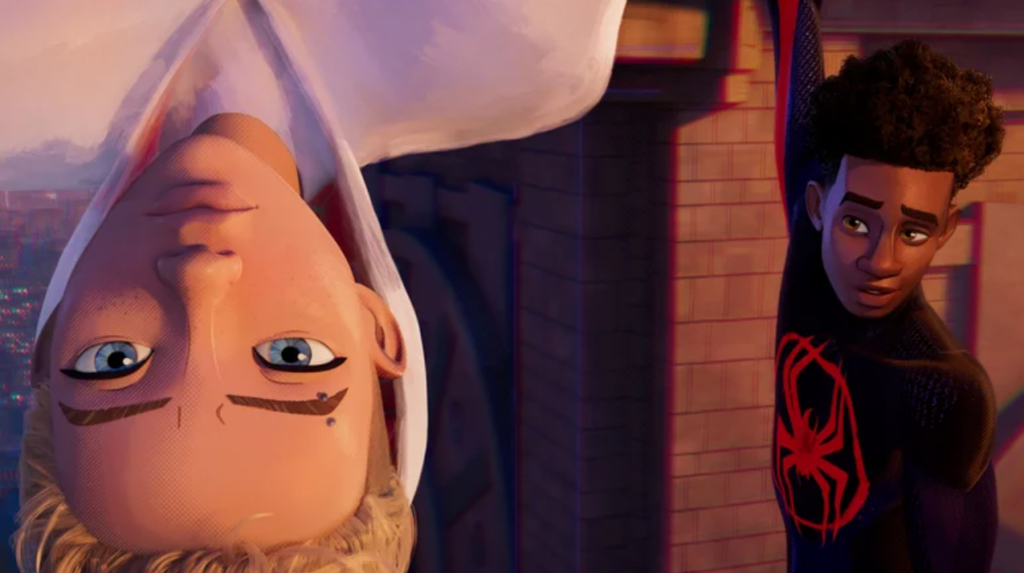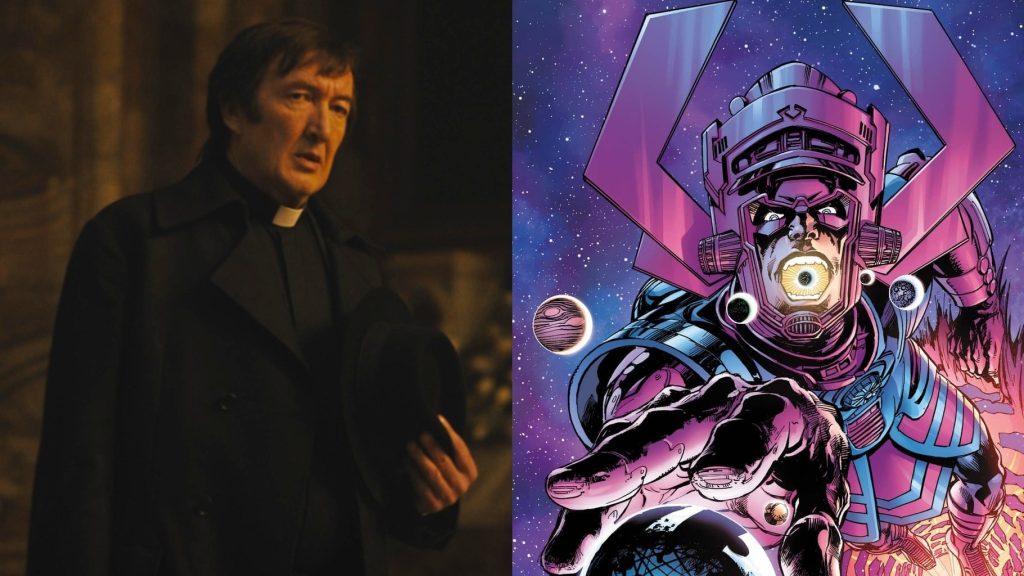Animated films are usually aimed at children, and “Spider-Man: Across the Spider-Verse” follows this trend. It captures the magical feeling of discovering comic books as a child, providing plenty of moments that will thrill kids worldwide. However, the creators of the movie have also recognized that animation can appeal to a wide range of ages, offering something special for adults as well. While the film is a lively and vibrant experience for children, adults will find even more to appreciate.
In “Spider-Man: Across the Spider-Verse,” Miles Morales, Gwen Stacy, and a host of new characters embark on a thrilling adventure. They find themselves in the Spider-Verse, a realm filled with hidden references, challenging moral choices, and the very essence of the Spider-Man narrative on the line. As Miles strives for an optimistic future where all possibilities are within reach, he encounters a formidable new foe, The Spot. He is faced with the difficult task of confronting his fellow Spider-people in a battle for his convictions.
It’s no surprise that “Spider-Man: Across the Spider-Verse” delves into a myriad of intricate themes and allusions that may escape the notice of younger viewers. From subtle nods to renowned artworks to a celebration of the diverse cultures within New York City’s Black and immigrant communities, the film carries profound subtexts exploring the challenges of parenthood and queer identity. These adult-oriented elements contribute to a movie that is rich in mature themes, despite its PG rating.
The many visual art references
The creators of “Spider-Man: Across the Spider-Verse” demonstrate their profound understanding of art by showcasing a remarkable blend of visual styles at the pinnacle of animation. Throughout the film, one can spot an array of references to renowned artists spanning various periods, encompassing everyone from revered Renaissance masters to contemporary artistic luminaries.
One of the most artful scenes in the film occurs early on when Gwen’s Spider-Woman confronts a Vulture with a Leonardo Da Vinci-inspired twist inside the Guggenheim Museum. Located in the iconic Upper East Side of Manhattan, this historic art museum was designed by the esteemed architect Frank Lloyd Wright and established in 1939. Throughout its history, the Guggenheim has showcased masterpieces by renowned artists ranging from Pablo Picasso to Jean-Michel Basquiat.
In addition to the Vulture’s connection to Leonardo Da Vinci’s futuristic designs, his battle with Spider-Woman leads to significant damage to renowned artworks. Notably, a giant balloon dog sculpture is sliced in half during their fight. This sculpture serves as a clear reference to Jeff Koons, an artist known for his iconic “Balloon Dog” sculptures displayed in prestigious museums and galleries worldwide. However, the destruction of the Koons dog in “Across the Spider-Verse” holds even deeper meaning. It alludes to a real-life incident in February of this year when one of Koons’ dog sculptures was accidentally shattered while on exhibit at the Art Winwood in Miami.
Towards the end of the battle, Gwen, Jessica, and Miguel manage to halt a descending helicopter by suspending it with webbing. A casual visitor at the Guggenheim Museum comments, “Yeah, I think it’s a Banksy.” This line pays homage to a similar reference in “Spider-Man: Into the Spider-Verse” and alludes to Banksy, the anonymous English street artist renowned for his provocative guerrilla street art.
Hip-hop and graffiti culture
In both “Spider-Man: Across the Spider-Verse” and its prequel, “Spider-Man: Into the Spider-Verse,” hip-hop culture takes center stage in shaping Miles Morales’ character. This choice aligns perfectly with the Afro-Latino Spider-Man’s identity, as hip-hop originates from the vibrant Black and Puerto Rican communities of New York City.
Hip-hop is characterized by its pillars, famously outlined by Afrika Bambaataa: DJing, MCing, breakdancing, graffiti, and, for some, knowledge. Miles Morales encompasses all five of these elements. He showcases his skills as a talented graffiti artist, and his encounter with the spider that grants him powers occurs while he is creating graffiti on a wall. In “Across the Spider-Verse,” we witness Miles paying a beautiful tribute to his late Uncle Aaron (Mahershala Ali) through a mural he paints on a wall near his family’s apartment.
When it comes to DJing and MCing, Miles showcases his musical taste onscreen and through the film’s soundtrack, curated by hip-hop producer Metro Boomin. The soundtrack features a lineup of legendary New York City rappers spanning multiple generations, including Nas and A$AP Rocky. A poster of A$AP Rocky’s 2013 album, “Long. Live. ASAP.,” can even be seen hanging next to Miles’ bed. These two rappers hold significance for Miles Morales, as he originates from Brooklyn like Nas but resides in A$AP’s neighborhood of Harlem in other “Spider-Man” stories.
DJing serves as the foundation of hip-hop culture. Originating from Afro-Latino and Caribbean dance halls, the art form involved a DJ skillfully mixing vinyl breakbeats while an MC engaged the crowd with their rhythmic vocals. In “Spider-Man: Across the Spider-Verse,” at Jefferson Morales’ party, a DJ can be seen scratching vinyl, paying homage to this rich history.
Lastly, Miles’ portrayal as Spider-Man incorporates elements of breakdancing. His agile movements while swinging and engaging in combat bear a resemblance to iconic breakdancing maneuvers such as the windmill and airflare.
The struggles of parenting
“Spider-Man: Across the Spider-Verse” places significant emphasis on the parent-child relationships depicted in the story. Miles Morales keeps his heroic activities concealed from his parents, while Gwen’s father discovers her secret early on. Additionally, Peter B. Parker enters the scene with a young child. The film delves into the challenges and complexities of parenting, making it a central theme throughout.
While “Spider-Man: Across the Spider-Verse” primarily follows the perspectives of its young protagonists, it also acknowledges the significant emotional journeys of their parents. Both Gwen and Miles yearn for unconditional love and support from their parents, irrespective of their identities. Though their parents genuinely care for them, finding the right equilibrium in their relationships becomes a challenge.
As the three sets of parents discover, there is no universal formula for raising a child. Jefferson and Rio Morales (portrayed by Brian Tyree Henry and Luna Lauren Velez) face challenges due to their differing parenting approaches. Jefferson leans towards strict discipline, while Rio believes in giving Miles the freedom to express himself in the hope that he will open up to her.
In a different reality, George Stacy (played by Shea Whigham) unveils the truth that his daughter Gwen is actually Spider-Woman, the very superhero he has been tirelessly pursuing, mistakenly believing she was responsible for the death of her friend Peter (portrayed by Jack Quaid). Initially resistant to accepting her, George eventually makes the decision to embrace his daughter, acknowledging that parenting is an enigma.
Lastly, there’s Peter B. Parker, who confides in Miles that he became a father with the hope that his daughter would inherit his qualities. Peter experiences a mix of immense joy and paralyzing fear as a new parent, constantly worrying about making mistakes. The anxiety surrounding the uncertain future of their children weighs heavily on all the parents depicted in the film.
Vintage Spider-Man
In the thrilling chase scene at the heart of “Spider-Man: Across the Spider-Verse,” as Miles desperately tries to elude the Spider Society, the sheer multitude of Spider characters is overwhelming. While it’s impossible to keep an exact count, Miles hints at their staggering numbers, suggesting that there are hundreds of them.
For those who have thoroughly studied Spider-Man lore, the appearance of numerous Spiders in Miguel O’Hara’s Spider Society would have been a delightful recognition. However, if you’re at an age where a simple wrong sleeping position can cause back pain for a week, you likely experienced a wave of nostalgia upon seeing Spider-Men from the era before the turn of the millennium.
We couldn’t help but notice that the oldest Spider-Man incarnation we encountered in “Across the Spider-Verse” harks back to the 1967 animated TV series. Modern audiences best remember this version for its unforgettable theme music, which has been remixed in various adaptations of the character over the years. Due to the series’ limited budget, this Spider-Man was notoriously under-animated, lacking the intricate spider web patterns on his costume. However, he has become a popular figure in internet memes, with the famous “Spider-Man pointing” meme making an appearance during a humorous moment in the chase sequence of “Across the Spider-Verse,” as well as in “Spider-Man: No Way Home.”
In addition, we catch glimpses of Ben Reilly, also known as Scarlet Spider, who makes several appearances in the film, especially when the Spider Society dispatches its agents to Miles’ universe. This character made his debut in 1975 in the pages of “Amazing Spider-Man #149.” We also encounter the Spider-Man donning a paper bag over his head, known as the Bombastic Bag-Man, who first appeared in “Amazing Spider-Man #258” in 1984.
Gwen and Miles have queer subtexts
“Spider-Man: Into the Spider-Verse” struck a chord with many LGBTQIA+ fans, who found it remarkably relatable to their own journeys. Superheroes have long served as allegories for queerness, as demonstrated in Fox’s “X-Men” films from the late 2000s. However, in “Across the Spider-Verse,” the subtext addressing queerness is anything but subtle.
Transgender Spider-Man fans have astutely observed that “Across the Spider-Verse” incorporates elements that resonate with trans experiences in Gwen Stacy’s character arc. Symbolic references include a trans pride flag with the empowering message “protect trans kids” displayed on her bedroom wall. Additionally, during a poignant scene where Gwen expresses the challenges of concealing a significant part of her identity, the visuals are infused with the pastel pink, blue, and white hues of the trans flag.
Meanwhile, Miles faces a relatable challenge as he struggles to reveal his true identity as Spider-Man to his parents. This situation resonates strongly with queer individuals who have experienced the fear and uncertainty of coming out. The thought of not being accepted by one’s parents for who they truly are can be overwhelming. While it may appear easier to keep this truth concealed, internalizing such emotions often results in a profound and endless turmoil of emotional pain.
“Spider-Man: Across the Spider-Verse” carried the weight of its acclaimed predecessor, which earned an Academy Award and sparked a surge of innovative animation techniques across the industry. However, the film exceeded expectations, showcasing its remarkable ability to captivate audiences of all ages and backgrounds. It demonstrated that animation has the power to resonate with people from diverse walks of life.













